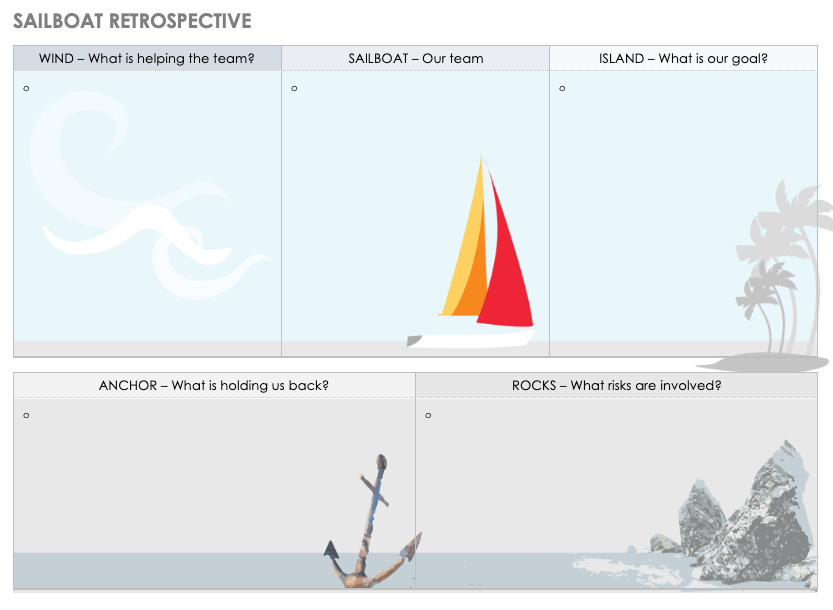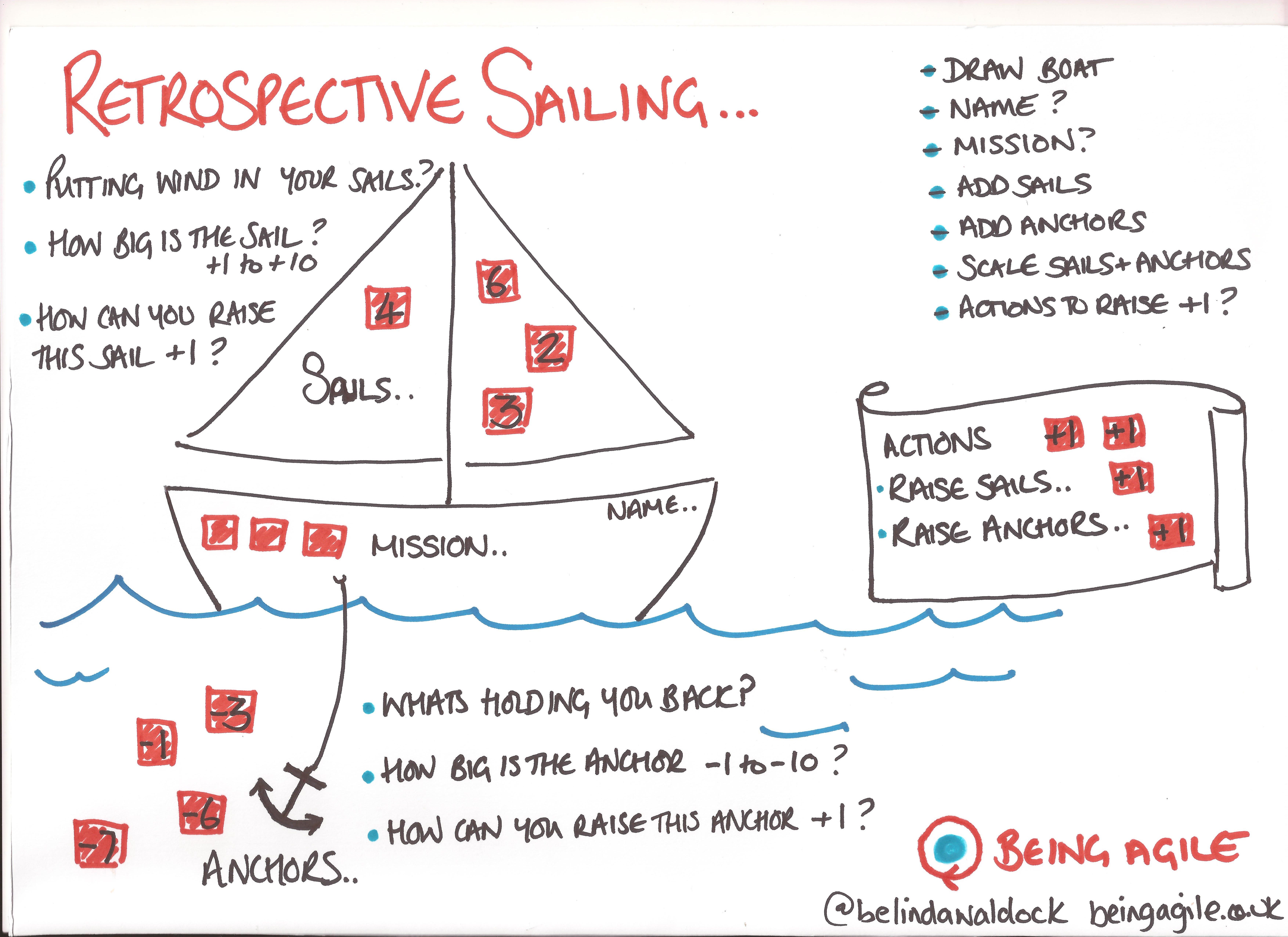


Read: " Frontend Developer RoadMap 2020" 4. The team should discuss and create risk mitigation techniques around such scenarios, the successful risk mitigation technique can also be used in other projects.
#SAILBOAT RETROSPECTIVE SOFTWARE#
The unavailability of suitable prebuilt software modules or components, changed or extended requirements, sudden eviction of crucial team members whichever is the reason that can extend the development time, cost and reduce business value for customers can be termed as pirates i.e. Unclear documentation, insufficient requirement gathering, insufficient team members, unavailable resources, or vague development path or targets could be the obstacles as rocks. Read: " Backend Developer Roadmap for 2020" 2.

#SAILBOAT RETROSPECTIVE CODE#
Team members, skills, gathered requirements, or reusable code that’s propelling the team forward. The tickets will be categorized into the following perspectives: 1. Now the team members can submit their tickets on the whiteboard with sticky notes or a digital team collaboration board. The sailboat’s base should be half in water half outside of it which represents well-balanced team. In sailboat retrospective meeting the agile coach and product owner should draw a sailboat, wind, rocks, pirates and anchor. To curb this issue the team members should create a rule with mutual consent that no one will blame each other and present defending arguments. Sailboat Retrospective TechniqueĪlthough retrospectives are essential for teams they can turn out to become a quarrel hence the facilitator must be careful while conducting this meeting. Sketch your visuals.Retrospectives are an integral part of running sprints and sailboat retrospective technique is one such technique where sailboat represents team, wind or air represents things that are propelling the sailboat forward, the anchor represents the things that are slowing them down, rocks are obstacles and pirates are risks.Identify points to focus on, for example, having a growth mindset, etc.Set rules, no judgments, negativity, blame, etc.Gather your key stakeholders and your team.To do a Sailboat Retrospective, follow these steps Afterwards, we evaluated the answers and took note of the areas to pay attention to in the next sprint. Everyone then added their own answers to the template with sticky notes. In order to understand how the sprint went, she asked the above mentioned questions and gave examples. My manager brought the team together and we discussed our last sprint. Reef: What risks might await you in the future?.Anchor: What difficulties you’ve faced during your sprint?.

Wind: What did allow you to move forward during your sprint?.You and your team can use sticky notes to answer these questions. Anchor: Things that held you back - delaying issuesĪ Sailboat Retro template on Miro Each image/symbol helps to answer these questions.Wind: Things that help you move forward.In the template, there will be an island, wind, rocks, sea, sailboat, and an anchor below the boat: To begin, you should open a Sailboat Retrospective template. After your sprint is done, you can run a Sailboat Retrospective with your team. It helps teams to identify what went wrong, what went right, or what improvements can be made in the future. What is a Sailboat Retrospective?Ī Sailboat Retrospective is a visual technique that helps you and your agile team to analyse the last sprint. Here is the Sailboat Retrospective method - a great way to control that stomach ache after the sprint.īy using the Sailboat Retrospective, you will be able to easily see with your team how many tasks you need to carry out for the next Sprint, what risks you will face, and what can do to make your jobs easier. Implementing a sprint plan is a difficult processes, and analysing what went right or wrong within the sprint is another process entirely.


 0 kommentar(er)
0 kommentar(er)
